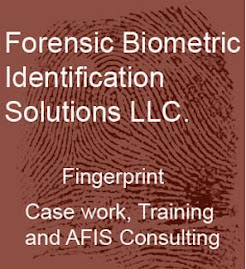http://www.tampabay.com/news/courts/criminal/court-rules-new-evidence-will-be-heard-in-polk-county-murder/1031909
When this crime occured the automated systems were not widely used,it would be 12 years before the FBI automaated fingerprint database would come on-line for local police latent units. Many agencies however continue to ignore the unidentified latent fingerprint image(s) once they have a prime suspect. The unidentified latent fingerprint(s)go into the case folder and that is the end of the investigation. What should happen with the unidentified latent fingerprint, even if an individual in a high profile case is convicted , the latent fingerp0rints should be entered into the automated fingerprint identification systems unsolved latent file. A file which will compare the unidentified latents entered against new arrest cards as they are added to the fingerprint databases. If this process does generate new suspects the fingerprints will be compared and the results returned to the investigators. The unidentified files do have a limit on the number of unidentifieds that it can handle however for most agencies it would allow the prints to be searched for quite a number of years.
Why bother for the few if any times this will occur ?
- 1st. a matter of getting the individual who actually committed the crime, a public safety issue.
- 2nd. cost, a retrial is a very costly matter. The cost of having prints searched by an automated system are insignificant even using the unidentified option.
Defense attorneys really should insure all latents have been identified and if not insure they were properly searched and stored in the systems unsolved latent file.
Bob McAuley
Dir. Operations/Training
Forensic Biometric Identification Solutions LLC.






